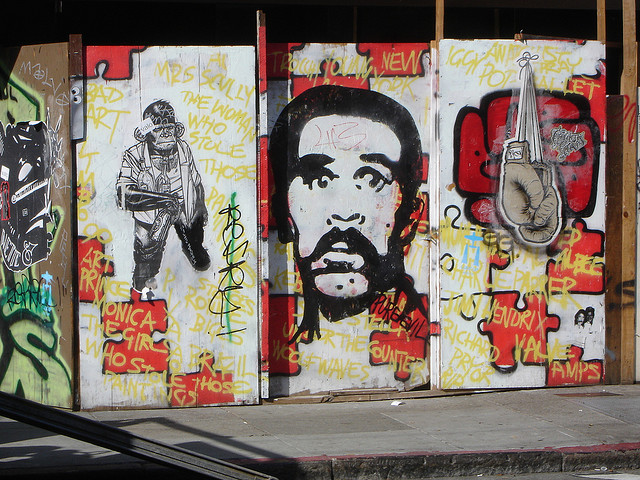
By Laura C. Mallonee
In mid-September of 1967, the comedian Richard Pryor walked out onto the stage of the Aladdin hotel in Las Vegas and had a nervous breakdown. He was 26 years old and had been working a gig performing stand-up every night for three weeks. On this particular evening, Dean Martin was in the crowd, waiting for a laugh. “Who was Dean looking at?” Pryor wondered, as he later recalled in his 1995 memoir Pryor Convictions. “I didn’t know who Richard Pryor was.” To the crowd’s dismay, his existential crisis sent him bumbling for an exit and speeding back to Los Angeles without delivering a single joke.
In the illuminating biography
He stopped trying to be just another Bill Cosby, telling jokes he didn’t really like.
While the biography suggests some answers, Saul has also released a free digital archive that allows you to seek out your own. Created in collaboration with Stanford University’s Spatial History Project, the online archive, called “Richard Pryor’s Peoria,” and named for the book’s first section, digitally unites 200 primary sources—from aerial maps of Pryor’s hometown to his elementary school report cards—for anyone with an internet connection to explore. The site, found at becomingrichardpryor.com presents one of the first full-fledged extensions of a traditional biography onto the web—an affirmation of historian Edward L. Ayers’s suggestion that “history may be better suited to digital technology than any other humanistic discipline.” On the About page of the site, Saul expresses his intention that the archive serve as “an experiment in the digital humanities, an attempt to open up the work of a biography for the digital age.” It’s also a field day for all of us who find ourselves dissatisfied with the paltry spread of photographs often wedged at the center of traditional biographies.
The site features a simple navigation bar with drop-down menus organized around the people—his father, for example, “Leroy ‘Buck’ Pryor”—places—“North Washington Street,” where he spent his first years —eras, and themes—such as “Segregation and Desegregation”—that dominated Pryor’s life. On a page dedicated to his grandmother, Marie, I browsed a document carousel before clicking on a bizarre clipping from the October 20, 1929 edition of the Illinois Decatur Herald. It recounted how, after hearing that a black boy had been slapped in a Greek-owned candy store, by the proprietor, Marie stormed into the shop and bludgeoned the white confectioner over the head “with some weapon that caused a flesh wound.” The injured woman fled into the street, but her livid attacker stayed behind to receive five policemen deployed to arrest her—powerful evidence of the gruff personality that raised Pryor and, as Saul writes, “took up residence in his psyche,” remaining there throughout his adult life. Though Saul vividly evokes this scene in Becoming Richard Pryor, examining the newspaper article allowed me to engage with the story in a way I hadn’t before. I was no longer a passive reader, content to relax in a narrative interpreted for me. Instead, I was encountering the sources firsthand.
Growing up in Peoria’s red-light district, in a brothel run by his grandmother, the comedian had a front row seat to what one 1956 article, included in the archive, dubbed an “Empire of Vice.”
This change in perspective led me to read about events in history that went beyond my initial interest in Pryor as a person. Growing up in Peoria’s red-light district, in a brothel run by his grandmother, the comedian had a front row seat to what one 1956 article, included in the archive, dubbed an “Empire of Vice.” His own father was a pimp and his mother a prostitute. They worked at a time when Peoria was, according to the Peoria Journal Star, “wide open as the gateway to Hell”—a place where prostitution and gambling were sanctioned, where divorce rates were twice the national average, where Al Capone was known to hide out. The fact that nearly 60 years later, in 2013, an article in The Economist referred to the city as “Anytown USA” not only shows how much it’s changed since Pryor’s childhood; it also recalls that same veneer of American wholesomeness that Pryor’s comedy so ruthlessly peeled back.
While “Richard Pryor’s Peoria” lets you come to your own conclusions about Pryor’s life, that doesn’t mean the biographer or his viewpoint are absent. Saul does, after all, control the archive. Unlike many mass digitization projects, where archivists take a more silent role, the thoughtful descriptions that accompany each item reflect the growing recognition among digital humanities scholars that access—that famed democratizer—doesn’t necessarily bring more understanding to the general public if they lack a frame of reference.
But even as the biographer guides the user with extensive context, Richard Pryor’s Peoria doesn’t presume to solve the riddle of Pryor’s life—the many, great lingering whys.
But even as the biographer guides the user with extensive context, Richard Pryor’s Peoria doesn’t presume to solve the riddle of Pryor’s life—the many, great lingering whys. Why he married seven times. Why he hit the women he loved. Why he doused himself in alcohol and lit a match. Here, the authoritative narrative touted by most “definitive” and “comprehensive” biographies—as if anyone could fully understand another’s life—unravels into many threads. Pryor’s somewhat self-destructive and abusive habits might be attributed to many things—that he was raped as a child, for instance, or that Peoria in the 1940s didn’t have much to offer poor black kids. Each answer sheds some perspective, but none fully satisfies the query. And that’s okay. The answer, you eventually realize, isn’t nearly as important as the search.

